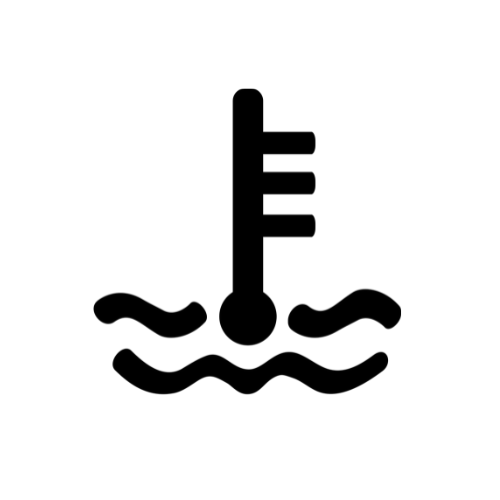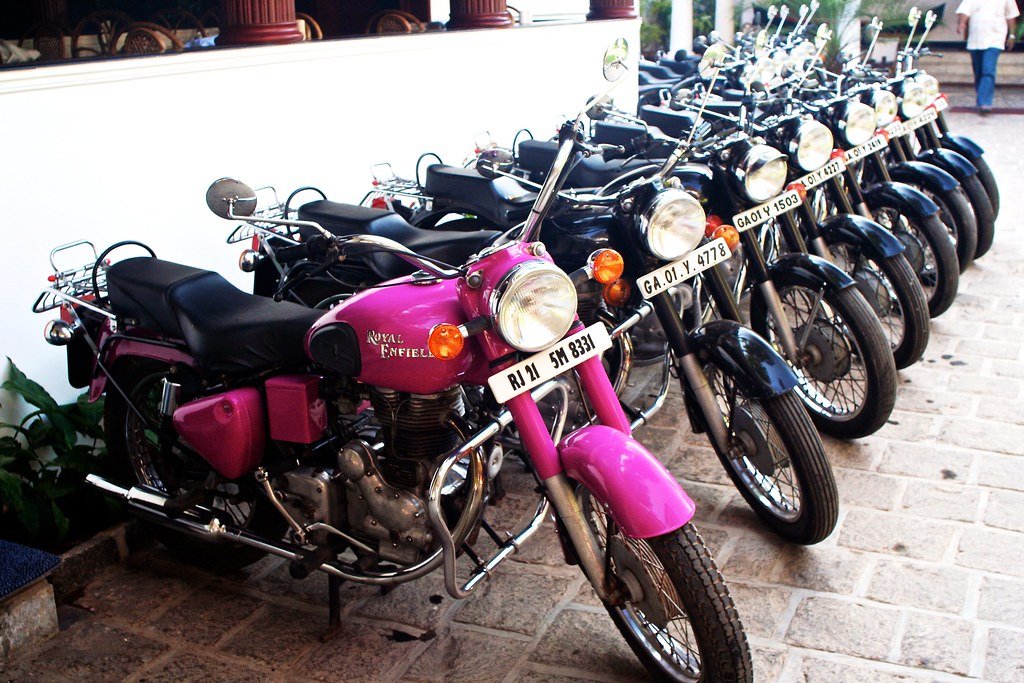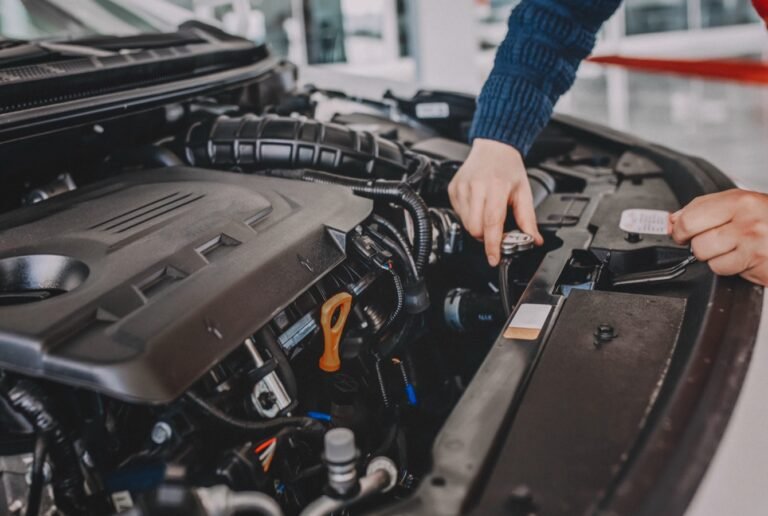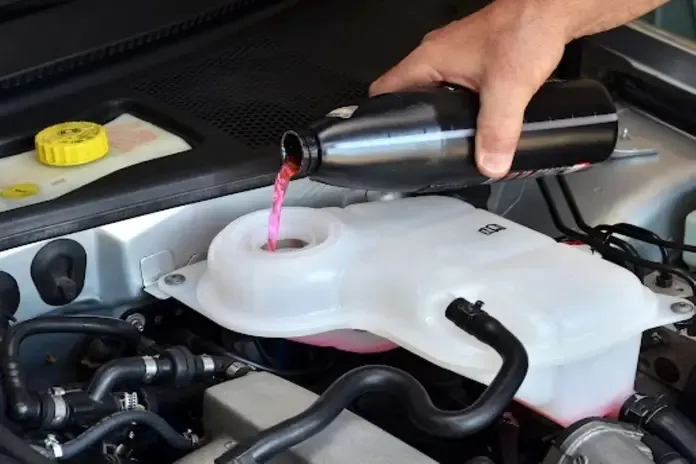Can You Use Car Coolant in a Motorcycle? Risks & Tips
Yes, you can use car coolant in a motorcycle as long as it is compatible. Motorcycle coolant is preferable due to its specific formulation for smaller engines.
Car coolant may work in a pinch but could potentially cause issues with your motorcycle’s cooling system. It’s essential to check compatibility and consult your motorcycle’s manual before using car coolant. Using the wrong coolant can lead to overheating and damage to your motorcycle’s engine.
Proper maintenance and using the right coolant will help ensure your motorcycle runs smoothly and efficiently.
Is Car Coolant Okay for Motorcycles?

Car coolant is not always suitable for motorcycles. Motorcycles have specific cooling system requirements, and using the wrong type of coolant can lead to performance issues or damage.
2. What Makes Motorcycle Coolant Different from Car Coolant?
Motorcycle coolant is specially formulated to meet the unique demands of motorcycle engines, which can be different from those of cars. Key differences include:
- Additives: Motorcycle coolants often have additives tailored for higher RPMs and different operating conditions.
- Silicate Levels: Some motorcycle coolants use silicates to protect aluminum components, which may not be compatible with car coolants.
- Boiling and Freezing Points: Motorcycle coolants are designed for a range of operating temperatures specific to motorcycles.
3. Can I Use Car Coolant in an Emergency?
In an emergency situation, you can use car coolant temporarily, but it’s important to replace it with the correct motorcycle coolant as soon as possible. Ensure that the car coolant you use is compatible with aluminum engines and does not contain harmful additives.
4. What Are the Risks of Using Car Coolant in a Motorcycle?
Using car coolant in a motorcycle can lead to:
- Corrosion: Incompatible additives may cause corrosion or damage to motorcycle engine components.
- Overheating: Car coolants may not be optimized for the operating temperatures of motorcycle engines.
- Reduced Performance: Car coolant may not provide the necessary protection or efficiency required for motorcycle engines.
5. How Can I Tell if a Coolant is Suitable for My Motorcycle?
To determine if a coolant is suitable for your motorcycle:
- Check the Owner’s Manual: Refer to your motorcycle’s owner’s manual for specific coolant requirements.
- Look for Certifications: Ensure the coolant meets the standards or specifications recommended by the manufacturer.
- Consult a Professional: If in doubt, consult with a motorcycle mechanic or dealership for guidance.
6. What Type of Coolant Should I Use for My Motorcycle?
Use coolant that is specifically formulated for motorcycles. Look for products that:
- Meet Manufacturer Specifications: Follow the recommendations in your motorcycle’s owner’s manual.
- Are Free from Silicates: Some motorcycles require silicate-free coolant, which may not be present in car coolants.
- Provide Adequate Protection: Ensure the coolant offers proper protection against freezing, boiling, and corrosion.
7. Can I Mix Motorcycle Coolant with Car Coolant?
It’s not advisable to mix motorcycle coolant with car coolant. Mixing different types of coolant can lead to chemical reactions that might reduce effectiveness or cause damage. Always use the recommended coolant type for your motorcycle.
8. How Often Should I Change Motorcycle Coolant?
Motorcycle coolant should be changed according to the intervals specified in your owner’s manual. This is usually every 1 to 2 years or after a certain mileage.
9. Can I Use Antifreeze Alone Without Coolant?
Using antifreeze alone is not recommended for motorcycles. Coolant serves both as an antifreeze and a coolant, providing essential properties such as corrosion protection and lubrication that antifreeze alone cannot offer.
10. What Should I Do if I Accidentally Use Car Coolant?
If you accidentally use car coolant, monitor your motorcycle for any signs of overheating or performance issues. Schedule a coolant flush and replacement with the proper motorcycle coolant as soon as possible.
Car Coolant Vs. Motorcycle Coolant
When it comes to maintaining your motorcycle, using the right coolant is essential for optimal performance. Understanding the differences between car coolant and motorcycle coolant is crucial for ensuring the longevity and efficiency of your bike’s engine.
Key Ingredients
Car coolants typically contain ethylene glycol or propylene glycol, corrosion inhibitors, and other additives. On the other hand, motorcycle coolants may include silicate additives that are specifically designed to protect aluminum components.
Viscosity And Heat Transfer
Car coolants are formulated to work within a specific temperature range, often higher than what motorcycle engines operate at. Motorcycle coolants, on the other hand, are designed to provide efficient heat transfer in the lower temperature range typically seen in motorcycle engines.
Potential Risks Of Using Car Coolant In Motorcycles
Using car coolant in a motorcycle can pose risks due to different chemical compositions. This may harm the engine’s components, leading to overheating and potential damage. It’s crucial to use the recommended coolant specific to motorcycles for optimal performance and longevity.
Corrosion Concerns
Using car coolant in a motorcycle can lead to corrosion concerns. Car coolants are formulated with corrosion inhibitors that are specific to car engines and cooling systems. These inhibitors are not suitable for use in motorcycles and can cause damage to the metal components of the motorcycle’s cooling system. The corrosion caused by the use of car coolant can lead to leaks, which can cause the engine to overheat and potentially fail.
Rubber Component Degradation
Another potential risk of using car coolant in motorcycles is rubber component degradation. Car coolants contain chemicals that can break down the rubber components of a motorcycle’s cooling system. This can cause the rubber seals and hoses to become brittle and crack, leading to leaks and potential engine damage. It is important to use a coolant that is specifically designed for use in motorcycles to avoid this type of damage.
In conclusion, it is not recommended to use car coolant in motorcycles due to the potential risks of corrosion and rubber component degradation. Using a coolant that is specifically designed for motorcycles will help ensure the longevity and proper functioning of the motorcycle’s cooling system.
Performance Implications
Motorcycle owners often wonder whether it’s okay to use car coolant in their bikes. While it may seem like a cost-effective solution, it’s important to consider the performance implications before making the switch.
Cooling Efficiency
The cooling system in a motorcycle is designed to dissipate heat generated by the engine, preventing it from overheating and causing damage. Using car coolant in a motorcycle can affect the cooling efficiency of the engine, which can lead to overheating and reduced performance.
Car coolants are usually designed for larger engines, and may not have the same heat dissipation capabilities required for smaller motorcycle engines. Additionally, car coolants may not be able to circulate properly through the smaller coolant passages found in a motorcycle engine, leading to hot spots and potential damage.
Engine Wear And Tear
Another performance implication of using car coolant in a motorcycle is increased engine wear and tear. Car coolants often contain additives and chemicals that may not be compatible with motorcycle engines.
These additives can cause corrosion and damage to the engine over time, leading to premature wear and tear. This can result in costly repairs and reduced performance, as well as a shorter lifespan for the engine.
While it may be tempting to use car coolant in a motorcycle, it’s important to consider the potential performance implications. Cooling efficiency and engine wear and tear are just two of the factors that should be taken into account before making the switch.
Ultimately, it’s best to use a coolant that is specifically designed for motorcycles, in order to ensure optimal performance and longevity of the engine.
Motorcycle Manufacturer Guidelines
When it comes to maintaining your motorcycle’s cooling system, it’s crucial to follow the guidelines set by the manufacturer. These guidelines ensure optimal performance and longevity of your bike. One important aspect to consider is the type of coolant to use. In this section, we will explore the warranty implications and recommended coolant types according to the motorcycle manufacturer guidelines.

Warranty Implications
Using car coolant in your motorcycle can have serious warranty implications. Manufacturers design their motorcycles to work with specific coolant formulations, and deviating from these guidelines can potentially void your warranty. To protect your investment and ensure warranty coverage, it’s essential to adhere to the manufacturer’s recommended coolant types.
Recommended Coolant Types
The motorcycle manufacturer guidelines typically specify the recommended coolant types for their specific models. While different manufacturers may have varying preferences, here are some common coolant types you might come across:
| Coolant Type | Description |
|---|---|
| Propylene Glycol-based Coolants | These coolants offer excellent protection against freezing and boiling, as well as corrosion. They are often recommended for motorcycles. |
| Ethylene Glycol-based Coolants | These coolants are commonly used in automobiles but may not be suitable for motorcycles due to their different cooling system requirements. |
| Pre-mixed Coolants | Some manufacturers provide pre-mixed coolants that are specifically formulated for their motorcycles. These ready-to-use solutions eliminate the need for mixing with water. |
Always consult your motorcycle’s owner manual or contact the manufacturer directly to determine the recommended coolant type for your specific model. Following these guidelines will help ensure optimal cooling system performance and protect your warranty.
Real-world Experiences
When it comes to using car coolant in a motorcycle, real-world experiences from riders and insights from mechanics can provide valuable insights. Below, you will find testimonials from riders and mechanic insights to help you understand the implications of using car coolant in your motorcycle.
Testimonials From Riders
Riders who have tried using car coolant in their motorcycles have varying experiences. Here are a few testimonials:
- John: “I decided to use car coolant in my motorcycle as a temporary solution when I couldn’t find motorcycle coolant. It seemed to work fine for a short period, but I eventually noticed that my engine was running hotter than usual. I switched back to motorcycle coolant, and the temperature returned to normal.”
- Sarah: “I accidentally used car coolant in my motorcycle during a road trip. I didn’t notice any immediate issues, but after a few weeks, I started experiencing coolant leaks. I had to get my radiator repaired, which was an unexpected expense.”
- Mike: “I’ve been using car coolant in my motorcycle for years without any major problems. However, I make sure to choose a coolant that is compatible with aluminum engines and regularly monitor the coolant levels to avoid any issues.”
Mechanic Insights
Mechanics often have valuable insights into the effects of using car coolant in motorcycles. Here are a few key points:
- Compatibility: Car coolant may not be specifically formulated for the unique requirements of motorcycles. It’s essential to check if the coolant is compatible with your motorcycle’s engine materials, such as aluminum or copper.
- Heat Dissipation: Motorcycle engines operate at higher RPMs and generate more heat compared to car engines. Motorcycle-specific coolants are designed to handle this higher heat load efficiently.
- Corrosion Protection: Motorcycle coolants often provide additional corrosion protection for the specific components found in motorcycles, such as the radiator and water pump.
- Warranty Concerns: Using car coolant in a motorcycle may void the manufacturer’s warranty, as it goes against their recommended guidelines.
Ultimately, while some riders may have had success using car coolant in their motorcycles, it is generally recommended to use motorcycle-specific coolant. This ensures optimal performance, prevents potential damage, and avoids any warranty concerns. If you are unsure, consult with a mechanic or refer to your motorcycle’s manufacturer guidelines for the best coolant option.
Safe Practices When Choosing Coolant
When it comes to maintaining your motorcycle, using the right coolant is crucial for ensuring optimal performance and longevity. Safe practices when choosing coolant for your motorcycle involve compatibility checks and prioritizing quality over price. It’s essential to use the correct type of coolant to prevent damage to your motorcycle’s engine.
Compatibility Checks
Before adding coolant to your motorcycle, ensure that it is compatible with the specific requirements of your bike. Refer to the manufacturer’s guidelines to determine the suitable coolant type for your motorcycle. Conduct a compatibility check by reviewing the product specifications and consulting with a trusted mechanic or the motorcycle’s manual.
Quality Over Price
When it comes to choosing coolant for your motorcycle, prioritize quality over price. Investing in a high-quality coolant can contribute to the overall performance and longevity of your motorcycle’s engine. Opting for a reputable brand of coolant may involve a higher initial cost, but it can potentially save you from costly repairs in the long run.
Tips For Coolant Maintenance In Motorcycles
Maintaining proper coolant levels is crucial for motorcycle performance. While it may be tempting, avoid using car coolant in motorcycles as they have different formulations. Always refer to the motorcycle’s manual for the recommended coolant type to ensure optimal engine function.
Regular Flush Intervals
Regularly flush coolant every 2 years or as per manufacturer’s recommendation.
Monitoring Coolant Levels
Check coolant levels when the engine is cool to avoid burns.
Motorcycle coolant maintenance is crucial for optimal engine performance and longevity. Following these tips can help prevent costly repairs and keep your motorcycle running smoothly.
Regular Flush Intervals
Regularly flush coolant every 2 years or as per manufacturer’s recommendation.
Monitoring Coolant Levels
Check coolant levels when the engine is cool to avoid burns.
Alternatives To Using Car Coolant
Yes, you can use car coolant in a motorcycle, but it’s not the best option. Motorcycle-specific coolants are formulated to handle the higher engine RPMs and temperatures. It’s best to use motorcycle coolant for optimal performance and protection. Other alternatives include using distilled water and a water-wetter additive for better cooling.
Specialized Motorcycle Coolants
When choosing coolant for a motorcycle, specialized motorcycle coolants are the most recommended option. These coolants are specifically formulated to meet the unique requirements of motorcycles.
Environmentally Friendly Options
Opt for environmentally friendly options to minimize the impact on the environment. Look for coolants that are biodegradable and non-toxic to ensure eco-friendliness.
Conclusion
Using car coolant in a motorcycle is not recommended. It can lead to overheating and damage. It’s important to use the coolant specifically designed for motorcycles to ensure optimal performance and longevity of the engine. Always refer to the manufacturer’s recommendations for the correct coolant type.

At CoolantInCar, we are dedicated to demystifying the world of engine coolant and cooling systems.




